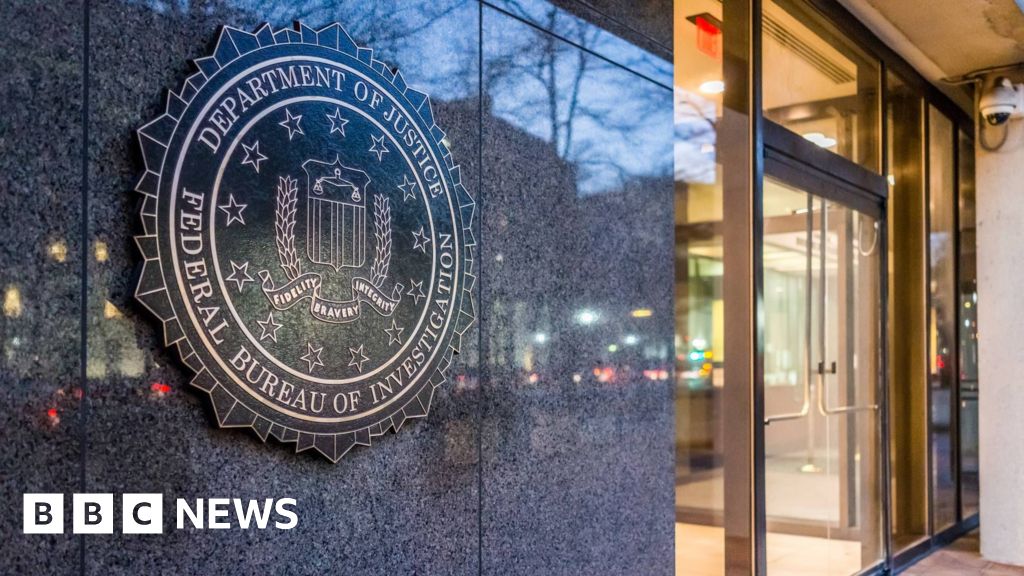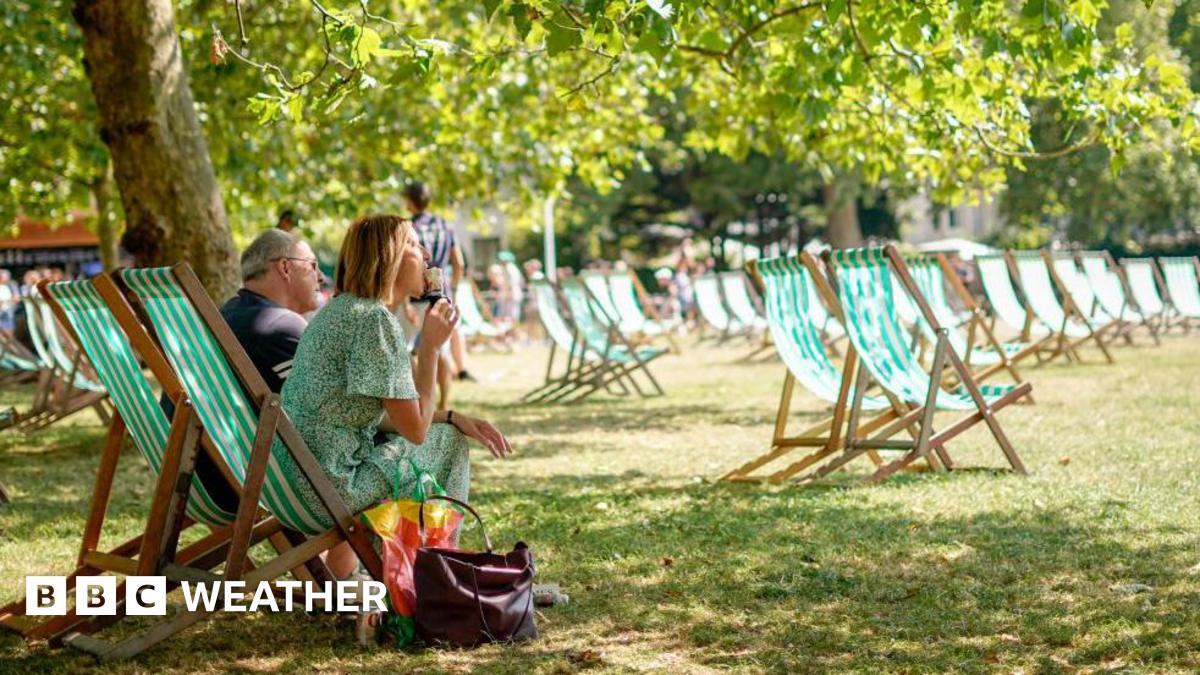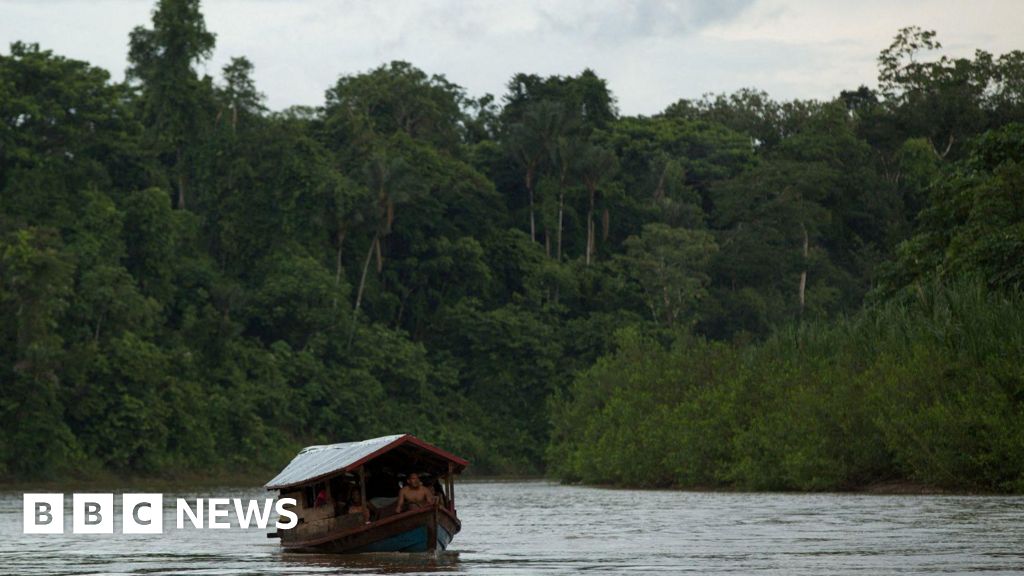Mark Poynting and Erwan Rivault
BBC Climate & Data teams

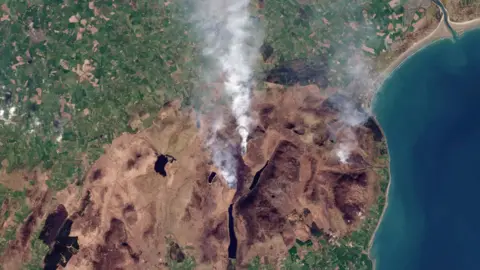 Planet Labs
Planet Labs
A prolonged dry spell created perfect conditions for wildfires
The area of the UK burnt by wildfires so far this year is already higher than the total for any year in more than a decade, satellite data suggests.
More than 29,200 hectares (292 sq km or 113 sq miles) has been burnt so far, according to figures from the Global Wildfire Information System, which has recorded burnt area since 2012.
That is more than the previous high of 28,100 hectares for the whole year of 2019.
The prolonged dry, sunny weather in March and early April helped to create ideal conditions for widespread burning, according to researchers.
Wildfires are very common in the UK in early spring, with plenty of dead or dormant vegetation at the end of winter that can dry out quickly.
The switch back to wetter conditions over the past couple of weeks has largely brought an end to the spell of fires for now, but not before reaching record levels.
The figures from the Global Wildfire Information System only capture fires larger than roughly 30 hectares (0.3 sq km).
More than 80 such fires have been detected across the UK since the beginning of the year.
Most fires are deliberately or accidentally started by humans, but favourable weather conditions can make it much easier for fires to ignite and spread quickly.
"We had an exceptionally dry and sunny March," said Will Lang, head of risk and resilience services at the Met Office.
"This followed quite a wet autumn and winter, which can have the effect of increasing the vegetation that acts as fuel for any fire that does start."
A lack of rainfall in March and April can be particularly conducive to fires.
"The vegetation is coming out of the winter and it has gone dormant, so it's not growing, and therefore it's very dry and doesn't have water," explained Guillermo Rein, professor of fire science at Imperial College London.
"Then in the spring, before you start to collect the water into the live tissue, there is a period where it's very flammable."

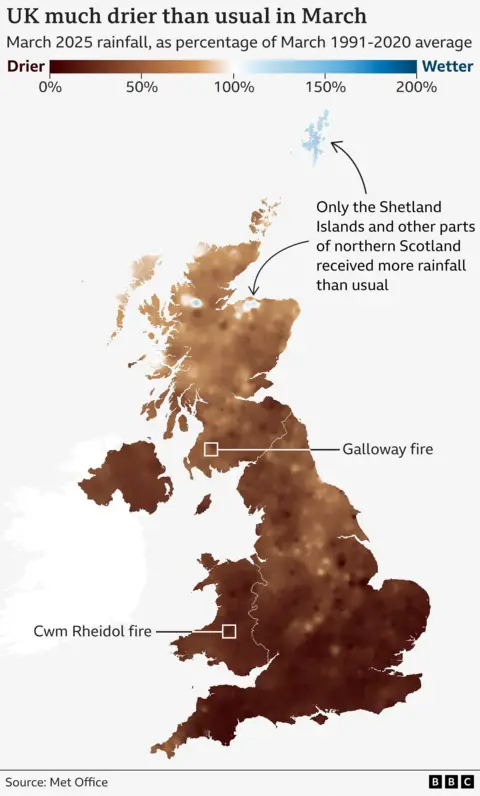
The seven days from 2 to 8 April saw more than 18,000 hectares (180 sq km) burnt, the highest weekly figure on record.
The BBC has also analysed satellite images to illustrate two of the biggest burns this year.
In Galloway Forest Park, in south-west Scotland, an estimated 65 sq km burnt, nearly a quarter of the UK total.
A fire in the Cwm Rheidol area of Wales, about 25 km (16 miles) from Aberystwyth, also burnt a large area of roughly 50 sq km.
Fires have also been detected by satellite imagery on the Isle of Arran, the Isle of Bute and the Isle of Skye in Scotland, as well as in the Mourne Mountains in south-east Northern Ireland. All occurred in early April.
These early season burns - predominantly grass, heath and shrub fires - have created great strain on fire services, but their ecological impacts can be complicated.
Not all fires, particularly smaller, lower-intensity burns, are necessarily catastrophic to long-term vegetation health.
Certain plants, such as heather, are adapted to fire-prone environments. But increasingly frequent or severe blazes can impair their ability to naturally recover.
Some researchers are concerned about the second peak of the fire season, which typically comes later in the year when temperatures are high and vegetation has dried out again.
"My number one worry is what is going to happen in the summer," said Prof Rein, when "there are fewer wildfires but they are bigger and they can actually be seriously catastrophic".
"You can have 100 [small] wildfires across the whole country and all of them can be handled in one day, or you could have one summer wildfire that actually cannot be stopped in a week and actually goes on to burn houses."
The recent widespread burns don't necessarily mean this summer will be a busy fire season.
But scientists expect the UK to see an increase in weather conditions conducive to extreme wildfires in a warming world, even though there's lots of variation from year to year.
A study led by the Met Office found that the extreme "fire weather" that helped spread the destructive blazes of July 2022 were made at least six times more likely by human-caused climate change.
Shifts in the way land is used can also play a key role in shaping fire risk.
"One thing that seems to have consensus is that we are likely to see more fires and possibly worse fires with climate change," said Rory Hadden, senior lecturer in fire investigation at the University of Edinburgh.
"We need to be prepared for this to become more common."
Additional reporting by Phil Leake



 1 month ago
76
1 month ago
76






